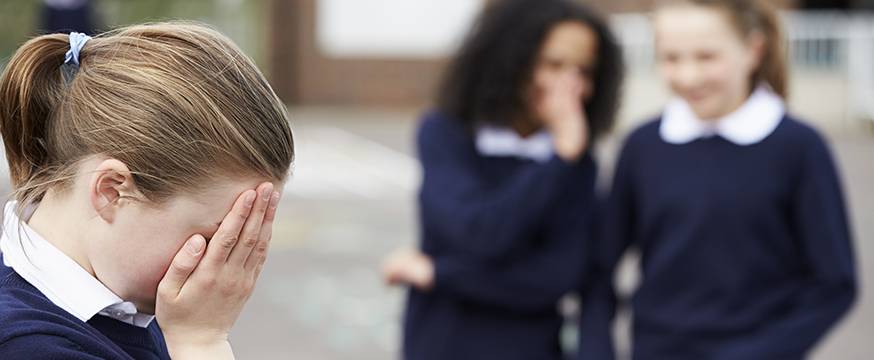
Bullying, school safety and student achievement
Research 18 Mar 2019 5 minute readLower incidences of bullying in schools are linked to higher levels of achievement, according to Sue Thomson.
Analysis of national survey data by ACER Deputy CEO Dr Sue Thomson suggests that increasing the proportion of students who feel safe at school could lead to higher academic achievement.
Writing in Teacher, Dr Thomson said that the achievement gap between those who feel very safe in school and those who do not tends to increase as students progress through school.
‘Feeling safe in school appears to have a stronger relationship with academic achievement for girls than boys, and this increases as students move from primary to secondary school,’ Dr Thomson said.
According to the 2015 Trends in International Mathematics and Science Study, led in Australia by Dr Thomson, 59 per cent of Australian Year 4 students and 45 per cent of Australian Year 8 students strongly agree that they feel safe at school.
In terms of the affect this has on achievement, Dr Thomson said at Year 4, girls and boys who strongly agreed that they felt safe at school achieved, on average, 17 and 19 score points higher respectively in mathematics and 10 and 12 score points higher in science than those who felt less safe in school.
‘At Year 8, the differences between students who felt very safe and those who felt less safe were larger, and were more evident for girls than boys,’ Dr Thomson said.
TIMSS also asked Year 4 and Year 8 students how often they experienced certain bullying behaviours. Teasing and name calling was the most commonly reported form of bullying in Australian schools, cited by 20 per cent of Year 4 students and 17 per cent of Year 8 students.
Unsurprisingly, students who reported almost never being bullied at school were more likely to report feeling safe at school than those who were bullied frequently.
Dr Thomson’s article follows Friday’s National Day of Action against Bullying and Violence, an initiative of all Australian education authorities.
‘Bullying, and cyberbullying in particular, can significantly influence students’ perceptions of school safety,’ Dr Thomson said. ‘However, the ramifications of bullying on students’ levels of stress and well-being are not always considered as elements of school climate.’
Read the full article:
‘Feeling safe at school – what does the research say?’, written by Sue Thomson and published in Teacher magazine, is available at <www.teachermagazine.com.au/columnists/sue-thomson>
Analysis of national survey data by ACER Deputy CEO Dr Sue Thomson suggests that increasing the proportion of students who feel safe at school could lead to higher academic achievement.
Writing in Teacher, Dr Thomson said that the achievement gap between those who feel very safe in school and those who do not tends to increase as students progress through school.
‘Feeling safe in school appears to have a stronger relationship with academic achievement for girls than boys, and this increases as students move from primary to secondary school,’ Dr Thomson said.
According to the 2015 Trends in International Mathematics and Science Study, led in Australia by Dr Thomson, 59 per cent of Australian Year 4 students and 45 per cent of Australian Year 8 students strongly agree that they feel safe at school.
In terms of the affect this has on achievement, Dr Thomson said at Year 4, girls and boys who strongly agreed that they felt safe at school achieved, on average, 17 and 19 score points higher respectively in mathematics and 10 and 12 score points higher in science than those who felt less safe in school.
‘At Year 8, the differences between students who felt very safe and those who felt less safe were larger, and were more evident for girls than boys,’ Dr Thomson said.
TIMSS also asked Year 4 and Year 8 students how often they experienced certain bullying behaviours. Teasing and name calling was the most commonly reported form of bullying in Australian schools, cited by 20 per cent of Year 4 students and 17 per cent of Year 8 students.
Unsurprisingly, students who reported almost never being bullied at school were more likely to report feeling safe at school than those who were bullied frequently.
Dr Thomson’s article follows Friday’s National Day of Action against Bullying and Violence, an initiative of all Australian education authorities.
‘Bullying, and cyberbullying in particular, can significantly influence students’ perceptions of school safety,’ Dr Thomson said. ‘However, the ramifications of bullying on students’ levels of stress and well-being are not always considered as elements of school climate.’
Read the full article:
‘Feeling safe at school – what does the research say?’, written by Sue Thomson and published in Teacher magazine, is available at <www.teachermagazine.com.au/columnists/sue-thomson>
